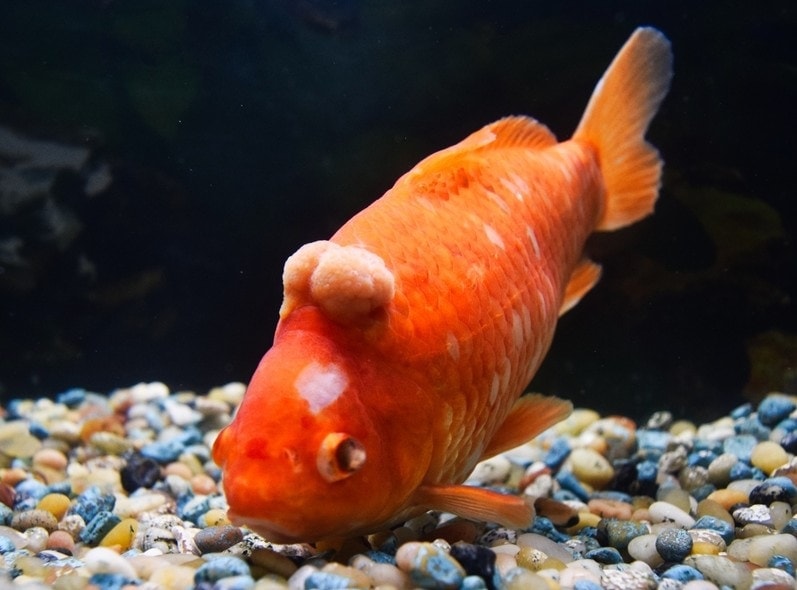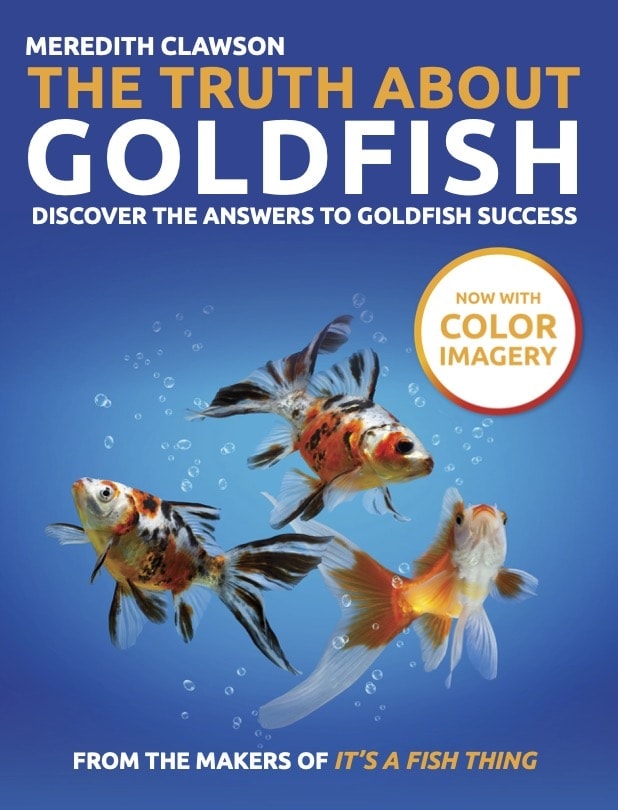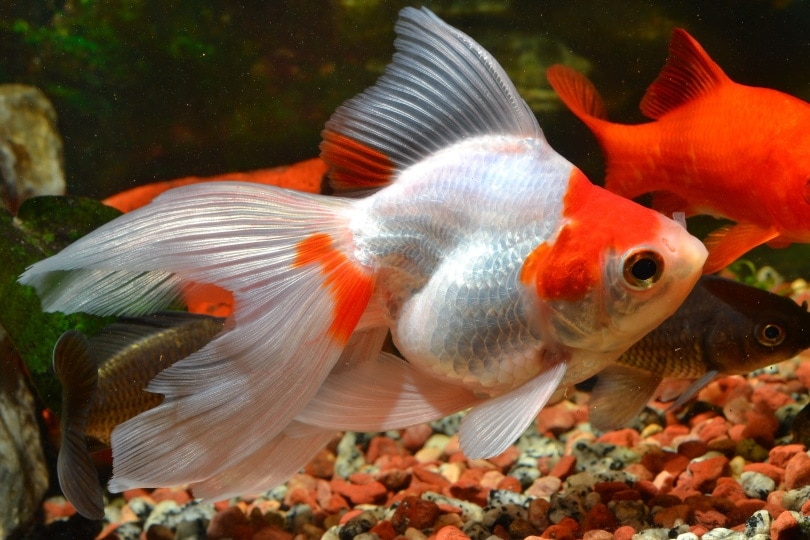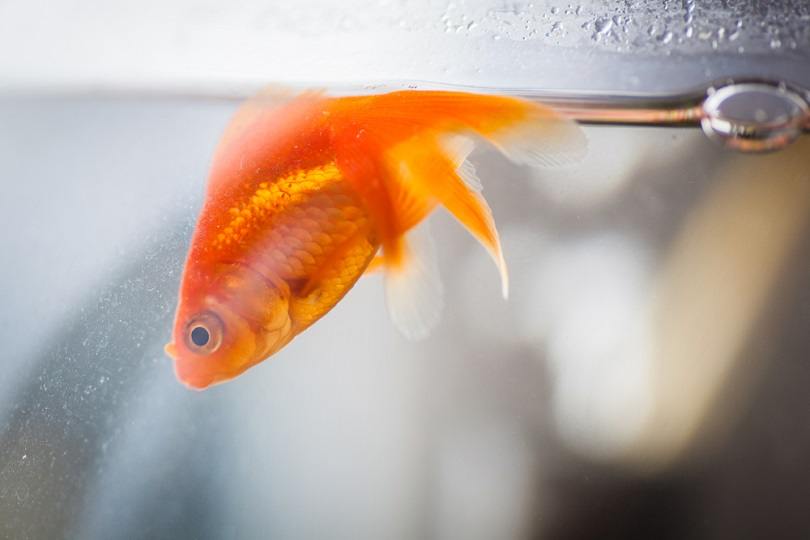What to Do About Tumors & Growths in Your Goldfish: Facts & FAQs

By Lindsey Stanton
May 14, 2023
Share

Is your goldfish suffering from tumors, but you don’t know what to do about it? Are you looking for options that can help your fish live a healthy, normal life again? There are hundreds of people like you who feel the same way.
So read on to learn more about tumors and growth in your goldfish!
What Exactly are Tumors?
They’re every goldfish owner’s worst nightmare.
Basically, tumors are cancer, rogue cells that multiply out of control, leading to abnormal lumps. Tumors occur in people and pets—fish included. These growths vary in color, shape, and size. And they can grow anywhere on the fish’s body as well as inside of it. Tumors are nasty, and they can get big. Sometimes to the point where the swimming ability of the fish is impaired.
The worst part? They can KILL fish, especially when they are on the inside of the body, and start pushing against internal organs.
Yikes!
Pond fish and aquarium fish alike can get them.
If you suspect your fish is sick and want to ensure you provide the right treatment, we recommend that you check out our best-selling and comprehensive book The Truth About Goldfish on Amazon today.

It has entire chapters dedicated to in-depth diagnoses, treatment options, a treatment index, and a list of everything in our fishkeeping medicine cabinet, natural and commercial (and more!)
Why Do Goldfish Get Tumors?
This is a pretty difficult question to answer with 100% certainty because there is a considerable lack of studies done on factors that can cause tumors in fish.
But there is evidence that carcinogenic substances that come in contact with the fish can lead to tumors.
Theories worth considering include:
- Exposure to cancer-causing medications (most commercial fish medications are carcinogenic)
- Fluoride in their water (yes, most tap water contains a pretty good bit of fluoride, a known carcinogen)
- Chemical preservatives in low-quality fish food
Look:
While we don’t have much evidence on goldfish tumors specifically, there is other evidence that may point us in the right direction.
For example:
Animals in the wild, such as sea turtles, that are not exposed to industrialized areas do not get tumors.
 Image Credit: JuanCarlosPalauDiaz, Shutterstock
Image Credit: JuanCarlosPalauDiaz, ShutterstockWhat Can You Do About Them?
For years, surgery has been touted as the only option.
But it has major downfalls:
Expense – Surgeries can cost hundreds of dollars to perform on fish.
Lack of availability – Finding a vet that actually will see your goldfish can be difficult, if not impossible for many.
Risk – Surgery always comes with risks (that’s why you sign the form). Fish can bleed to death, die during anesthesia or simply be too weak to pull through the stress of it all. Secondary infection can occur in the wound where the tumor used to be.
Now, could there actually be a way to not just remove but actually reverse tumors without the use of surgery?
While I can’t legally make any promises or guarantees, Pure Goldfish has developed a protocol for dealing with tumors in fish that has shown some pretty amazing results.
Just look at the case studies below to see for yourself.
Case Study: Kona the Oranda
Over the years, I’ve had many goldfish owners contacting me wondering how they can help their fish that is suffering from a tumor. And aside from surgery, I didn’t have much to offer other than “Talk to a vet about removing the tumor…”
But then I came face to face with the problem I never thought would happen to my fish. My own beautiful red and white Oranda goldfish, Kona, developed a nickel-sized tumor at the base of his tail last summer. The tumor was purplish in color and lumpy like cauliflower. It had started out as a small white bump, but doubled in size every week for 3 weeks.
Needless to say, I was horrified.
After much reading on the subject, I developed and tested a totally new method designed to be used for fish. I was hopeful, but everyone I talked to was skeptical. Nobody that we knew of had ever tried this on aquaria.
But I decided to seize the opportunity anyway.
So, the first couple of days of the protocol, I didn’t notice any difference. But on day 4, I looked in the tank and I couldn’t believe what I was seeing: it actually looked better.
Could there really be something to this? So I kept it up. As time went on it strangely seemed to be shrinking and “closing in” on itself.
Within 3 weeks – it had totally disappeared.
I was literally shouting with joy, telling everyone in my family to “Kona’s tumor is gone! Look for yourself!”
And you know what?
They were shocked too. Needless to say, I’m sold on the power of this method to bring back a tumorous fish’s quality of life.
 Image Credit: dien, Shutterstock
Image Credit: dien, ShutterstockThe Vitamin B17 Connection to Tumors
What did I do to help cure Kona’s tumor? I only provided him with one treatment: Vitamin B17.
“But how does a vitamin possibly help destroy tumors?”
Good question. Vitamin B17 is made up of three things: sugar, benzaldehyde and cyanide.
What? Cyanide?!
Yes. Cyanide is a toxic substance, but interestingly enough it is totally harmless to life when combined with sugar and benzaldehyde. That means vitamin B17 is perfectly safe to consume.
But get this: There is a very rare substance in cancerous cells called Beta-glucosidase. This substance (only when present in large amounts, such as in cancerous cells) has the ability to react with the benzaldehyde and cyanide in B17, releasing the toxin and poisoning the cancerous cell.
After the reaction happens to the cancerous cell, the compounds then become beneficial nutrients – totally harmless to good cells.
Now, admittedly, using vitamin B17 can be tricky to administer to a goldfish. And that’s why I’ve developed a tumor treatment protocol for you. It’s all in my book, The Truth About Goldfish. I share the exact formula I use to reverse both internal and external tumors.
 Image By: Jammy Photography, Shutterstock
Image By: Jammy Photography, Shutterstock
FAQ About the Protocol
Q. Do I have to use chemicals for this?
A. No. This is an all-natural method that does not require the use of harsh chemicals.
Q. Are you going to tell me where to buy this stuff?
A. Absolutely! Instructions for sourcing are included, as well as recommended brands.
Q. Is it expensive?
A. You can follow the protocol for under $40, far less expensive than paying vet bills.
Q. How long does it take to work?
A. Initial improvement is usually seen in the 3–4 day mark, with the most drastic reduction witnessed at the 4–8 week timeline.
Q. Is this just a matter of clean water?
A. While clean water is important to fish health, clean water alone will not help remove existing tumors.
Q. What if my fish has a large internal tumor?
A. Very large internal tumors are more dangerous to fish, as they can impair organ function and can lead to death. In such cases there is the possibility of the tumor to recede – but the fish has a chance of passing away, just from the damage caused by the tumor itself before the protocol was started. In such a case, it is not the fault of the protocol, but of the tumor getting too large too late.
Get the protocol for FREE when you purchase your copy of The Truth About Goldfish.
Click here to check it out.
Featured Image Credit: Lindsey Schreiner, Shutterstock
Contents [show]
AUTHORED BY
Lindsey Stanton
Lindsey discovered her passion for fish keeping after a junior high school field trip to the Shedd Aquarium in Chicago. Prior to becoming Editor-in-Chief of It's a Fish Thing, Lindsey studied marine biology at the University of California-Santa Cruz. She loves goldfish, tetras, and mystery snails, and recently began experimenting with a saltwater aquarium.

No comments:
Post a Comment